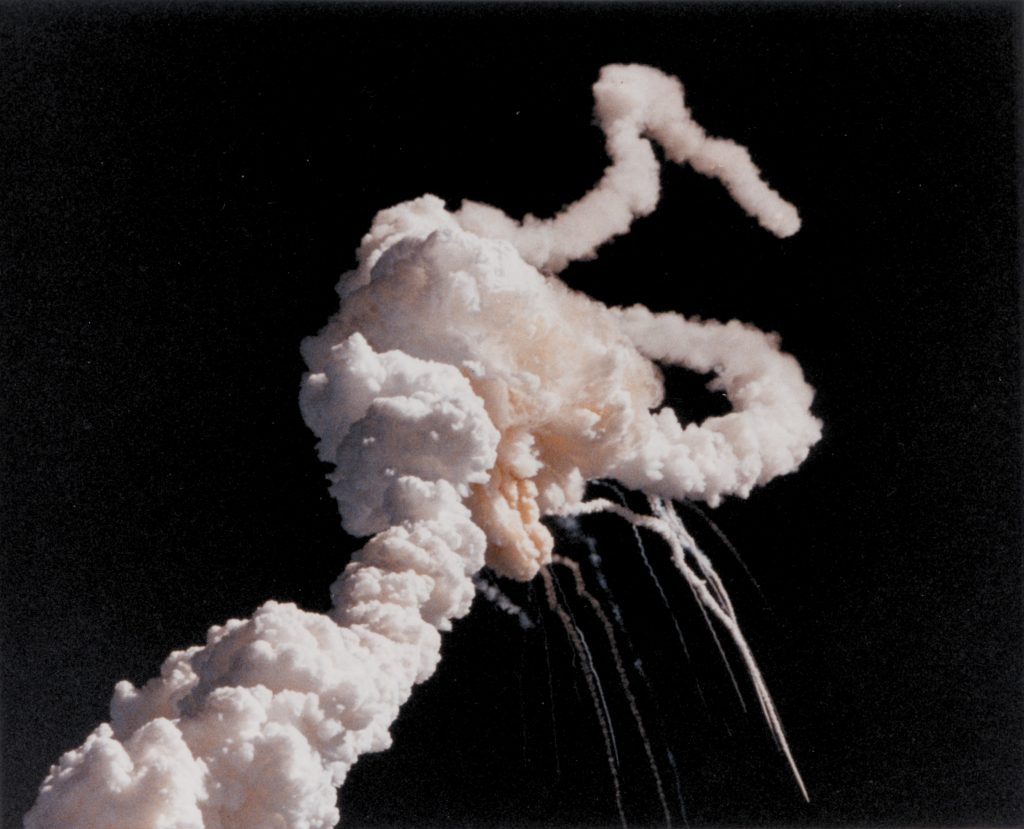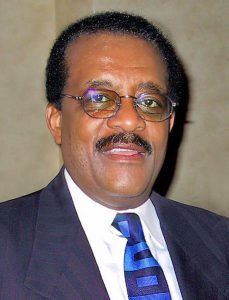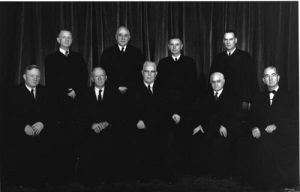On the evening of January 27th, 1986, an engineer at a little-known company told his wife, “It’s going to blow up.” That man was Bob Ebeling, an engineer for Morton Thiokol, which had been contracted to manufacture and maintain the solid rocket booster (SRB) used by NASA’s space shuttle program. On that night, he and his coworkers tirelessly pleaded with NASA officials to delay the launch of the space shuttle Challenger until temperatures were more favorable. Sadly, NASA officials did not heed these warnings, and all seven crew members of STS 51-L lost their lives.1
This story starts before that tragic day with the creation of the space shuttle program. As you can imagine, any vehicle designed for space undergoes rigorous testing and analysis before being put into use. During these early tests, engineers at the Marshall Space Flight Center saw a potentially catastrophic flaw in the two o-ring design that the SRB used in its joints and reported their concerns to NASA in 1971. NASA disregarded these concerns and did not pass this report onto Morton Thiokol for further evaluation. NASA approved the shuttle program and put the shuttles into production. By the second shuttle mission, there was serious evidence that supported the original concerns for the SRB o-ring failure. The evidence continued to stack up with each subsequent mission. In 1985 Morton Thiokol decided to redesign the joint to include an additional three inches of steel, which would grip the inner face of the joint and prevent it from rotating and potentially failing. Both NASA and Morton Thiokol agreed to continue with the launch schedule while they worked on this fix and accepted the potential for failure as an acceptable flight risk.2
Despite this risk, no shuttle had ever suffered a catastrophic failure during launch, orbit, re-entry, and no crew member had ever been injured or killed during a mission. The Challenger had already completed nine successful missions at this point and future missions were continuously being planned. This perfect record was a point of pride for NASA, and confidence continued to grow. This confidence caused NASA to be overly optimistic in their promise of how cost effective and efficient the shuttle program could be. These promises resulted in immense pressure from the government and tax payers to deliver on their promises with an overly ambitious launch schedule.3
The launch of STS 51-L had been planned as the first launch of 1986, and it would also put the first teacher in space. The addition of Christa McAuliffe, an elementary school teacher from New Hampshire, to the mission had garnered national and international attention. The launch was scheduled for January 22, 1986, but due to the delay of other missions, the launch of 51-L was pushed back several times — first to January 23rd, then to the 24th, 25th, 26th, and finally the 27th. On the morning of the 27th during regular countdown procedures, a micro switch indicated a failure of an exterior hatch-locking mechanism. By the time this issue was fixed, the winds had exceeded launch criteria. The launch was delayed yet again.4

Managers at Morton Thiokol had been watching the delays from their headquarters in Utah and were tracking the conditions with each delay. On the evening of the 27th, they saw the temperature would be below freezing at the launch site the next morning, which presented potential problems, raising concern. The shuttle and SRB had never been certified to operate in temperatures that low. Bob Ebeling had written an official memo for NASA titled “Help!” in 1985 where he described the extremely high potential for both o-rings to fail in temperatures below 40°F, but NASA had ignored it. That evening a manager at Morton Thiokol called Ebeling to ask if the shuttle could launch the following morning in the freezing temperatures. When Ebeling informed them of the extreme risk, they immediately started crunching the numbers and building their argument for the delay of the launch. Morton Thiokol and NASA held a teleconference. NASA opposed all arguments for a delay, and stated that if one o-ring failed there was a secondary mechanism that would stop a catastrophic failure from happening. Morton Thiokol engineers continued to explain that was an incorrect assumption that would surely lead to disaster. Sadly, NASA officials disagreed, and a second teleconference was scheduled. Except this time, the Morton Thiokol engineers were excluded, only management from NASA and Morton Thiokol were included. In this second call Morton Thiokol management disregarded the warnings of their own engineers and recommended that the launch proceed as scheduled.5

At 11:38AM on January 28th, 1986, STS 51-L launched from Cape Canaveral, Florida. On board were seven crew members: Francis Scobee, Michael Smith, Ronald McNair, Ellison Onizuka, Judith Resnik, Gregory Jarvis and Christa McAuliffe. At 11:39:13AM, just 73 seconds after launch, the space shuttle Challenger broke apart at an altitude of 14,000 meters. All crew members were killed when their cabin plummeted into the Atlantic Ocean three minutes after the break up.6
This disaster led to the immediate grounding of all shuttle missions. President Reagan convened a commission, called the Rogers Commission, to investigate the Challenger disaster. The results of the investigation showed the mechanical cause of the break up was a failure in both o-ring seals, which led to catastrophic structural failure. The report more importantly considered the contributing causes of the accident. It concluded that both NASA and Morton Thiokol failed to respond adequately to the potential danger of the SRB design, and instead of taking immediate action they accepted it as a flight risk. It also uncovered the large disconnect between management and engineers, which led to people who didn’t truly understand the science and math making a decision that was based on pride instead of fact.7

These tragic events unfolded more than three decades ago but are relevant today more than ever. The first private civilian space mission is rapidly approaching, and as it draws closer, we have to look closely at our past mistakes. If we don’t we are destined to repeat them. The millions who watched these events unfold have not forgotten how horrified they were, and they also remember how much the nation was shaken from this tragedy. Ebeling sums these feelings up best when describing how he feels looking back at what happened, “I could have done more. I should have done more.”8 We need to do our best to get everything right the first time, especially when failure equates to lives lost. We need to continue to focus on this as space travel becomes more prevalent in our society, and like Morton Thiokol and NASA in the ’80s, we can’t value our pride more than human lives.
- Howard Berkes, “30 Years After Explosion, Challenger Engineer Still Blames Himself,” NPR, January 28, 2016, https://www.npr.org. ↵
- Wikipedia, 2018, s.v. “Space Shuttle Challenger Disaster,” https://en.wikipedia.org/wiki/Space_Shuttle_Challenger_disaster. ↵
- Howard Berkes, “30 Years After Explosion, Challenger Engineer Still Blames Himself,” NPR, January 28, 2016, https://www.npr.org. ↵
- Diane Vaughn, The Challenger Launch Decision: Risky Technology, Culture and Deviance at NASA, Enlarged Edition (Chicago, IL: University of Chicago Press, 2016), 1-3. ↵
- Wikipedia, 2018, s.v. “Space Shuttle Challenger Disaster,” https://en.wikipedia.org/wiki/Space_Shuttle_Challenger_disaster. ↵
- Funk & Wagnalls New World Encyclopedia, 2017, s.v. “Challenger Disaster.” ↵
- Wikipedia, 2018, s.v. “Space Shuttle Challenger Disaster,” https://en.wikipedia.org/wiki/Space_Shuttle_Challenger_disaster. ↵
- Howard Berkes, “30 Years After Explosion, Challenger Engineer Still Blames Himself,” NPR, January 28, 2016, https://www.npr.org. ↵



96 comments
Dylan Sanchez
Never before have I been so disappointed in a company as a whole. Not one person admired this group of people’s words. Foolishness and negligence took the lives of these crew members. This was such a well written article and offered some great insight to first time readers of such incident.
Miguel Rivera
What an unfortunate event, that led to many changes in the program itself. A televised disaster, that is now somewhat normal in our times, was a devastating event that millions of people witnessed live. Many people still remember where they were when the disaster happened, which is like our generation and the 9/11 attacks.
Montserrat Moreno Ramirez
I commented in this article before, and as I stated before, I think that it was a really sad day for the nation. This disaster took the lives of seven innocent and very brave, intelligent people with a great illusion of making history, but at lest it helped for further expeditions. Congratulations for the nomination, you did a fantastic job with this article, very interesting topic!
Emily Jensen
The loss of life in any situation is heart breaking, but especially in those that could have been prevented. The poor souls of those seven crew member aboard the shuttle could have been saved if only NASA had heeded the engineers warning, just by delaying it until the weather improved. It is no wonder that your article has been nominated for an award, great work.
Katherine Watson
I remember the first time I heard about this story. My mom was telling about how she was in class and how she was so excited about the launching of the space shuttle just to be crushed at the aftermath. This is one of those moments in history where you have to sit back, reflect, and think about if pushing for success without weighing the potential dangers, especially if they are high and could result in people dying, is worth it. In this case, it wasn’t. The lives of seven beautiful souls are gone, but their bravery is forever with us. Congratulations on being nominated!
Noah Bolhuis
This event is still seen as a national embarrassment and a tragedy. The loss of these brave men and women was not necessary, and even worse it was completely avoidable. With what the engineers knew and told the heads of NASA, it should have been postponed until the machinery and computers were ready for launch. This was an international event viewed by millions around the world, and the fact that they even risked this kind of failure is embarrassing.
Damian Jennings
I have a different perspective of NASA now that I have been properly informed on their actions. I do wonder what was going through the committees heads when they disregarded the command to postpone the launch of this Space Shuttle. Great research and proposing the cons of NASA rather than the pros, it really captured my attention, the image.
Lorenzo Rivera
First of all, congratulations on being nominated for an award this semester. This article was both very well written, and extremely informative. You did a fantastic job of captivating the reader and clearly explaining the events of one of the saddest days in American history regarding the space shuttle disaster. What happened at NASA was extremely unfortunate. It was a really great read, and very enjoyable overall. Good luck!
Adam Portillo
This was very tragic to read. I’ve heard of the Space Shuttle Challenger accident before, but never in this much detail. I really feel that this accident could have been avoided altogether had NASA listened to Bob Ebeling’s advice. Instead NASA didn’t prioritize with the mission and the shuttle blew up. Seven lives were last that didn’t need to be lost that day. Awesome article.
Nathan Alba
It is always tragic when lives are lost in the name of science. Many times there are accidents that contribute to these unfortunate events, however when it comes to this specific case it just seems that the lives lost could have been saved had there been actual concern for those putting their lives on the line. Regardless it can be a wake up call that furthering science does not mean that people should fear for their lives when trying to perform a task.